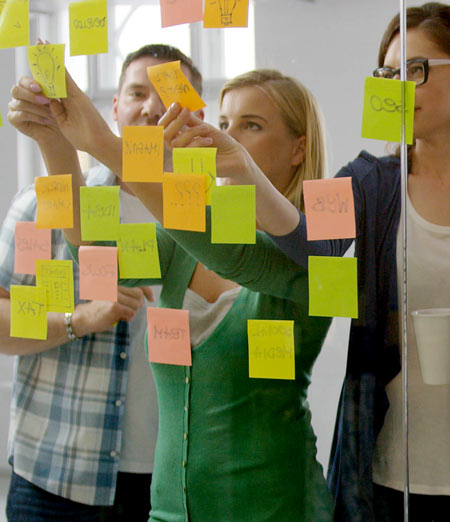Co-design is a way for consumers and health staff to work together equally to improve health services. This toolkit helps health services use co-design practices.
What is co-design?
Co-design is a way to make things together, to improve something.
A simple way to understand co-design is to break down the word.
| Co | = | collaborative, cooperative, collective (together) |
|---|---|---|
| Design | = | a practice / process to make things |
| Co-design | = | making things together, to improve something |
Co-design takes longer than standard project management, but saves time, money and resources that would otherwise be used to implement things that don’t work.
Designing something with people who have lived experience of the problem we’re trying to solve ensures the solution meets their needs. By investing more time upfront, you gain these longer- term benefits.
Co-design is a process and practice that has principles to follow when designing with people, not just for people.
Sponsoring a codesign project
Sponsors have a particular role in co-design. Learn about what is involved in sponsoring a co-design project.

Co-design as a process
Processes offer a structure to help people complete a specific task.
ACI’s co-design process is in four steps.
-
Start up and engage
Frame the project problem, build the team and get ready for co-design. -
Gather
Build understanding by learning from lived experience. -
Understand
Make sense of what you have learnt, identifying the key touchpoints and opportunities to improve. -
Improve
Create solutions. Prototype, test and learn. Adapt. Implement and evaluate.
Co-design as a practice
Practices are the applications of a method. They are flexible and adaptable ways of working.
Co-design practice includes tools and techniques from areas such as human-centred design or consumer engagement methods.
More about ways of working together in co-design
Co-design principles
Principles are underpinning beliefs or ideas that guide us.
- There is an equal and reciprocal relationship between all stakeholders, enabling them to design and deliver services in partnership.
- Planning, designing and producing services with people that have experience of the problem or service means the final solution is more likely to meet their needs.
- This way of working demonstrates a shift from seeking involvement or participation after an agenda has already been set, to seeking consumer and clinician leadership from the outset. That way, consumers and clinicians are involved in defining the problem and designing the solution.
Sometimes co-design isn’t the right fit for your project
Co-design is one of many creative ways to engage with consumers. Sometimes, it’s just not the right fit for your project.
Some of the reasons co-design might not work
- Timeframes are too tight.
- You don’t know how to co-design.
- You haven’t led a co-design project before and don’t have anyone to help you.
- The solution is already decided and there is no scope to change anything.
- Your organisation or service isn’t ready to share power with consumers.
- It feels like this is a box-ticking exercise.
- Other people aren’t interested in being involved, because this issue isn’t important to them.
There are lots of other ways to engage with consumers via collaborating, consulting and informing consumers. If co-design isn’t the right fit for your project, don’t throw in the towel completely! Something is always better than nothing. You can use co-design practices in any project, without needing to commit to a full co-design from the start.
To find out more about other ways to engage with consumers in your work, visit: